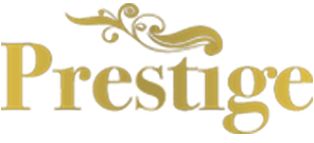Acupuncture and quit smoking
Understanding the principles of both Chinese Medicine and chemical dependency (smoking or alcohol addiction ), can lead to significant benefit in recovery from all forms of drug addiction as well as alcoholism and a variety of mental disorders.
While adapted to Western Medicine attitudes and conditions, the Treatment method derives directly from Chinese Medicine’s theory of Detoxification.
Based on the unique condition of our clients, treatment modalities may be selected at our Registered Acupuncturist ‘s discretion to enhance the overall therapeutic outcome. The treatment plan may include but not limited to:
The treatment plan may include but not limited to:
• Ear Acupuncture
• Body / Scalp Acupuncture
• Cupping
Our Registered acupuncturist will use a protocol involves inserting tiny, sterilized needles on certain acupuncture points on each ear and body and retaining those needles for 30 – 45 minutes to relieve symptoms of withdrawal and craving. While this treatment promotes recovery and stabilization, it also relieves symptoms of stress, anxiety, and pain
How acupuncture detoxification works? Research has confirmed the efficacy of acupuncture detoxification:
The 2005 published research study, “Acupuncture for Substance Abuse Treatment in the Downtown Eastside of Vancouver,” by University of British Columbia states that acupuncture therapy is designed to help alleviate the emotional (depression and anxiety) and physical (cravings) symptoms elicited by abstinence, particularly in the early phase of the process and then to achieve mood stabilization and relaxation in later stages of recovery. Researchers finally concluded, “Our study has demonstrated the success of a voluntary, inexpensive acupuncture program in engaging addicts in an acupuncture treatment, which they found to be beneficial in reducing their use of drugs.”
The Specific acupuncture treatment protocol has also been used to treat first responders after 911 as well as first responders and victims in the wake of Hurricane Katrina. The Director of the Office of Health Services in the Virginia Department of Mental Health, James Martinez says NADA practitioners have offered their services in the aftermath of the shooting massacre at Virginia Tech.
The World Health Organization also pointed out in their review and analysis of reports on controlled clinical trial that acupuncture is an useful treatment modality for alcoholism as well as for alcohol intoxication:
“Acupuncture has also been reported to be useful for treating alcohol recidivism. In placebo-controlled trials (with acupuncture at nonspecific points as the control), the patients in the treatment group expressed less need for alcohol than did the control patients. Patients in the treatment group also had fewer drinking episodes and admissions to a detoxification centre. It is interesting to note that in an experimental study on healthy volunteers, acupuncture diminished clinical alcohol intoxication by increasing the alcohol level in expired air and decreasing blood alcohol levels.”
Carefully developed and extensively tested, acupuncture detoxification assists recovery through the following pathways:
BIOCHEMICAL
- Assists endorphin production for enhancing the capacity to cope with stress and craving
- Assists body’s natural detoxification and chemical production to relieve withdrawal, craving, and other post-acute withdrawal symptoms
- Helps the process of regeneration and regrowth as well as the process of elimination of toxic substance
According to client survey, Lincoln Hospital had reported a 90% acute withdrawal symptom relief and a 100% secondary post-acute withdrawal symptoms reduction.
PSYCHOLOGICAL
- Acts as a balancing component of an overall treatment program
- Strengthens clients’ internal resources for enhancing a sense of vitality and well-being
- Promote a sense of internal relief from craving without external factors
- Helps strengthen clients’ acceptance of their potential to stay clean
SOCIAL
- Allows clients to engage in treatment in a non-threatening way with few verbal commands
- Advocates the importance of early treatment when clients may not be receptive to interventions
- Creates vitality and strength in a non-judgmental environment
